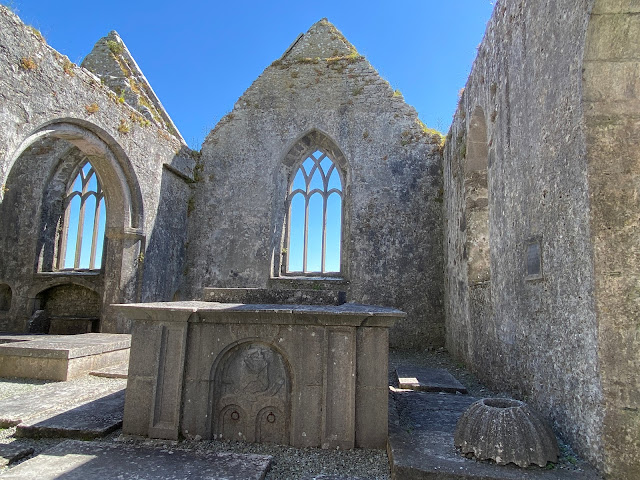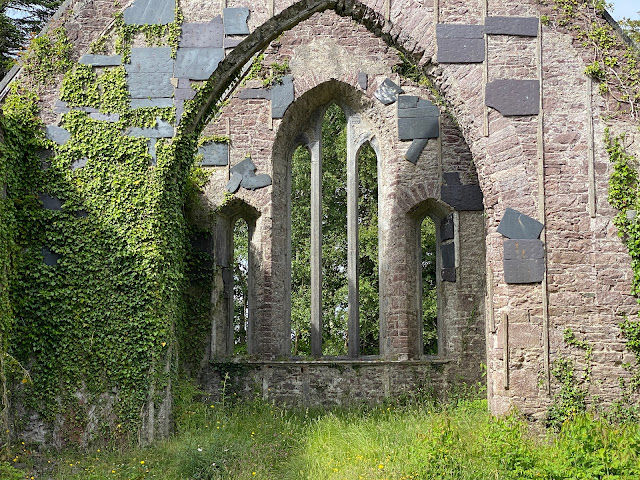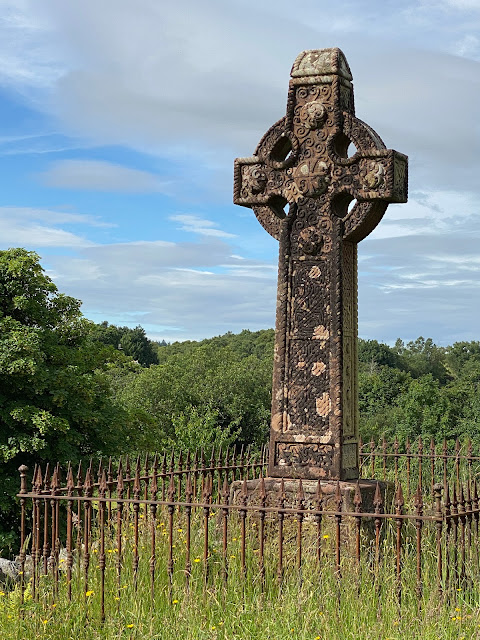Off The Beaten Path
We enjoyed a leisurely start to this day.
Jörg and I went to the grocery store for breakfast supplies and had a quiet breakfast at home.
After breakfast we spent some time trying to figure out how to get hot water for showers (note to self…never think you’re being clever by trying to set up something complicated…remember to KISS; Keep It Simple Stupid. We had to call the owner to help.
Our last troubleshooting effort of the day was sorting out international electric converters for charging phones and iPads. We use these things every day for maps, routing to dinner and shopping, and of course photos and keeping you all updated (though tardy I may be). Once sorted out, we ventured out to see stuff.
Patrick navigated us to a castle, Menlo Castle. Several sources date the original tower house to 1569, and it was recorded as being occupied by a Thomas Colman in 1574.
The castle was home to the Blake family for several centuries until it was destroyed by fire in the early 20th century. On 26 July 1910, while Sir Valentine Blake and Lady Blake were away in Dublin, a fire broke out in the castle. The body of their disabled daughter, Eleanor, was never found and she is presumed to have died in the fire.
The castle was largely left to ruin following the fire, and the Blake estate was divided by the (Irish) Land Commission in 1923.
While we were there, a local rowing team went by.
After the castle, we went into the city of Galway for a walk around. We checked out some shops (including a music store), Jörg had his hair cut and beard trimmed, and we grabbed some ice cream.
Patrick wanted to wander a little so Jörg and I visited Saint Nicholas' Collegiate Church, which was established in 1320. It is the largest medieval parish church in Ireland in continuous use for worship.
While Jörg was getting his beard trimmed and haircut, the barber told him about a scenic drive and mapped it out for him. Our plan had been to spend the afternoon taking that scenic drive. It ended up being much longer than we could get done in the remaining part of the afternoon, partly because we made so many stops, so our scenic drive turned into a hunt for castles and ruins. Actually, “hunt” makes it sound like it was more difficult than it really was. Ruins, in all forms, are actually very common here in Ireland. You can hardly throw a stick without hitting one.
The first ruins we came upon was Killursa Cemetery (active) and the 7th century Killursa Church (ruins).
Established as a monastery in the 7th century by Saint Fursey, the church on the current site dates from the 12th or 13th century with parts believed to be even older. By the 15th century, it had fallen out of use.
The next ruin we found quite by accident. As we were driving the small back roads of our scenic drive, Jörg spotted the tower of this friary off in the distance. We did a little backtracking and found a road that led directly to it.
Ross Errilly Friary is a medieval Franciscan friary that is among the best-preserved medieval monastic sites in the country. Though usually referred to by locals as "Ross Abbey," this is not technically correct as the community never had an abbot.
The friary was founded in 1351, but this date has been called into question by historians. Architectural cues and documentary evidence suggest that the friary was founded sometime in the middle of the 15th century, perhaps around 1460. Life at Ross Errilly was disrupted by the English Reformation. The Franciscans had loudly opposed King Henry VIII's break with Rome, which would prove costly after the schism. In 1538, English authorities imprisoned two hundred of the monks and banished or killed an indeterminate number of others. The rest of the Franciscans' history at Ross Errilly would be marked by repeated evictions and other persecutions...mostly by the English.
Panorama shots:
http://pnr.ma/aCpktx
Our final ruins of the day (the last one we stopped for, not the last one we saw) was Christ Church of Ireland, Gorteenmore.
Little is known (or reported) about these ruins, which appear to be in the same time as many other ruins; 15th-16th century. Set in the middle of a hill, this church looks out over green fields lined by stone walls and occupied by cows or sheep.
http://pnr.ma/cLHMTQ (another panorama)
By now we realized that we were not going to make the full scenic drive so we turned off and made our way back to the apartment. On the way, we stopped off for some dinner.






























































Comments